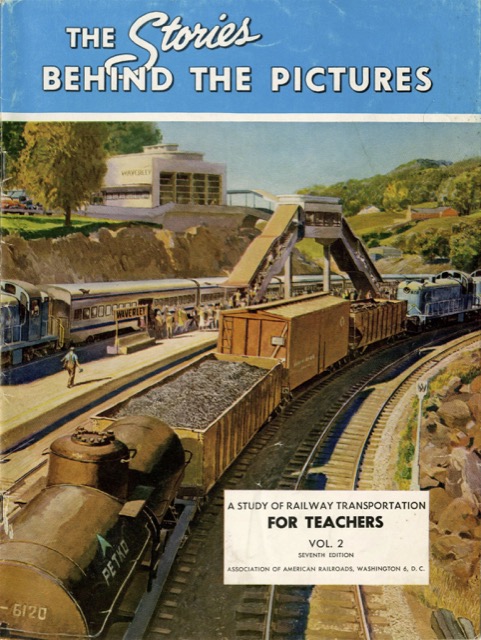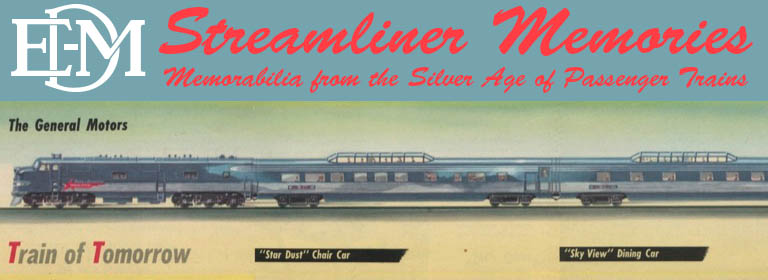I noted that yesterday’s booklet was designed to go along with the Railroads at Work booklet, but the former never really mentioned the latter. However, this one–which is labeled “vol. 2”–offers a detailed picture-by-picture explanation of 64 of the photos and illustrations in Railroads at Work.
 Click image to download a 50.6-MB PDF of this 76-page booklet.
Click image to download a 50.6-MB PDF of this 76-page booklet.
An entire page is devoted to each illustration, with about 650 words of description followed by eight to twelve discussion questions teachers can ask their students. For example, photo 11 in Railroads at Work shows a conductor and engineer comparing watches. The explanation in this booklet describes how the railroads created time zones in 1883.
One of the discussion questions is, “How many different times were used by the railroads of this country before standard time was adopted?” The answer, according to the teacher’s guide, is “about 100.” I don’t know how students were supposed to know the answer to that question since it wasn’t in Railroads at Work.
